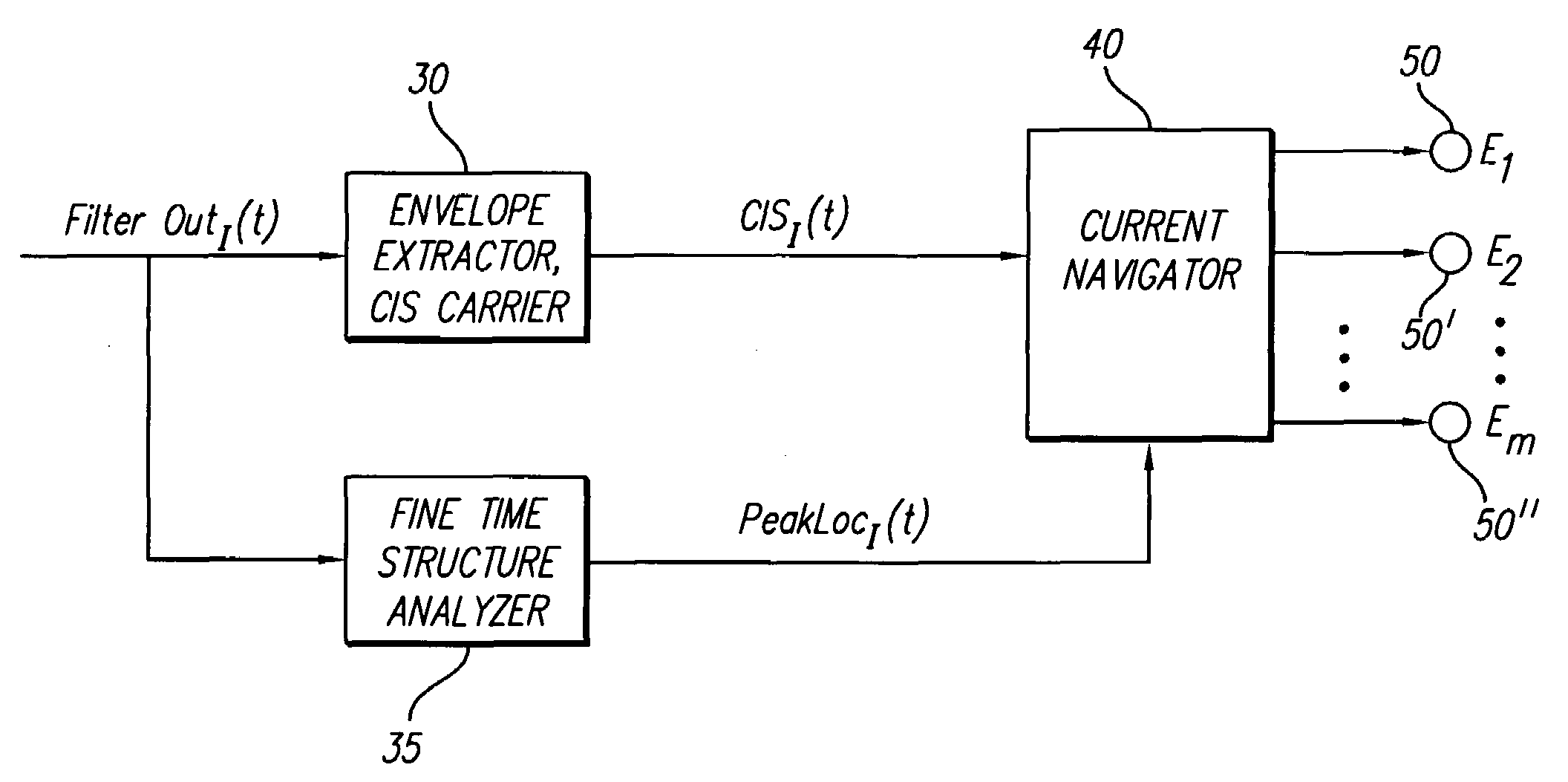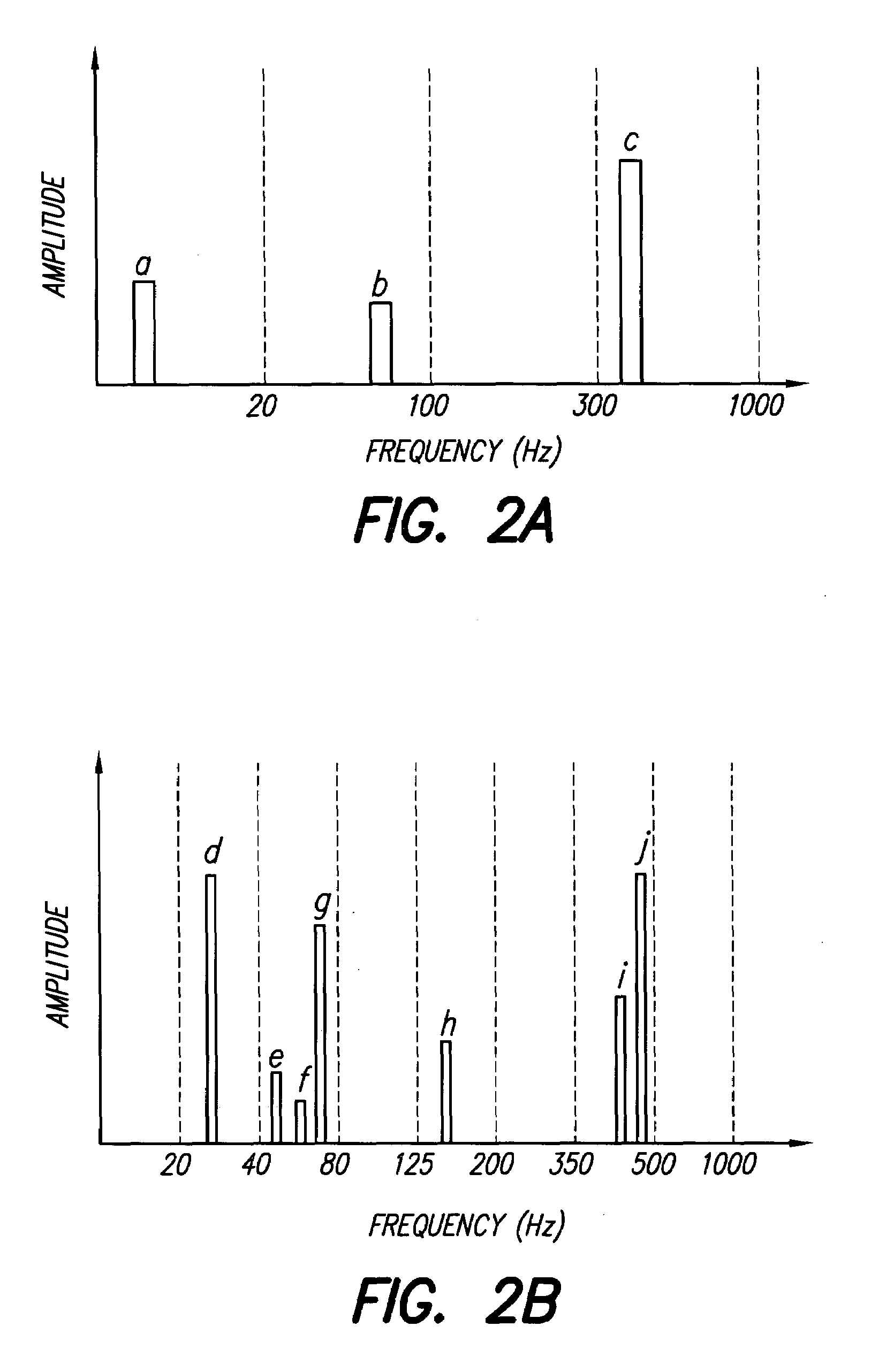Method of using non-simultaneous stimulation to represent the within-channel fine structure
a cochlea and fine structure technology, applied in the field of cochlea system and cochlea stimulation, can solve the problems of inability to simultaneously deliver separately, inability to accurately convey fts spatially to the cochlea, and poor stimulation of the spatial points on the length of the cochlea, etc., to achieve the effect of accurate conveying the fts
- Summary
- Abstract
- Description
- Claims
- Application Information
AI Technical Summary
Benefits of technology
Problems solved by technology
Method used
Image
Examples
Embodiment Construction
[0029]The following description is of the best mode presently contemplated for carrying out the invention. This description is not to be taken in a limiting sense, but is made merely for the purpose of describing the general principles of the invention. The scope of the invention should be determined with reference to the claims.
[0030]FIG. 1 shows a representation of incoming sound waves as a function of time. The envelope 10 of the sound provides the slow moving or lower frequency components of the sound. The faster varying components of the incoming sound 20 are the FTS components of the sound. Conventional cochlear stimulation systems take the incoming sounds, as represented in FIG. 1, and deconstruct the sounds into frequency bands (windows), as shown in FIGS. 2A and 2B.
[0031]FIG. 2A provides an example in which incoming sounds are processed into four separate frequency bands or windows. In this example, the four frequency bands may represent four distinct stimulation channels. ...
PUM
 Login to View More
Login to View More Abstract
Description
Claims
Application Information
 Login to View More
Login to View More - R&D
- Intellectual Property
- Life Sciences
- Materials
- Tech Scout
- Unparalleled Data Quality
- Higher Quality Content
- 60% Fewer Hallucinations
Browse by: Latest US Patents, China's latest patents, Technical Efficacy Thesaurus, Application Domain, Technology Topic, Popular Technical Reports.
© 2025 PatSnap. All rights reserved.Legal|Privacy policy|Modern Slavery Act Transparency Statement|Sitemap|About US| Contact US: help@patsnap.com



